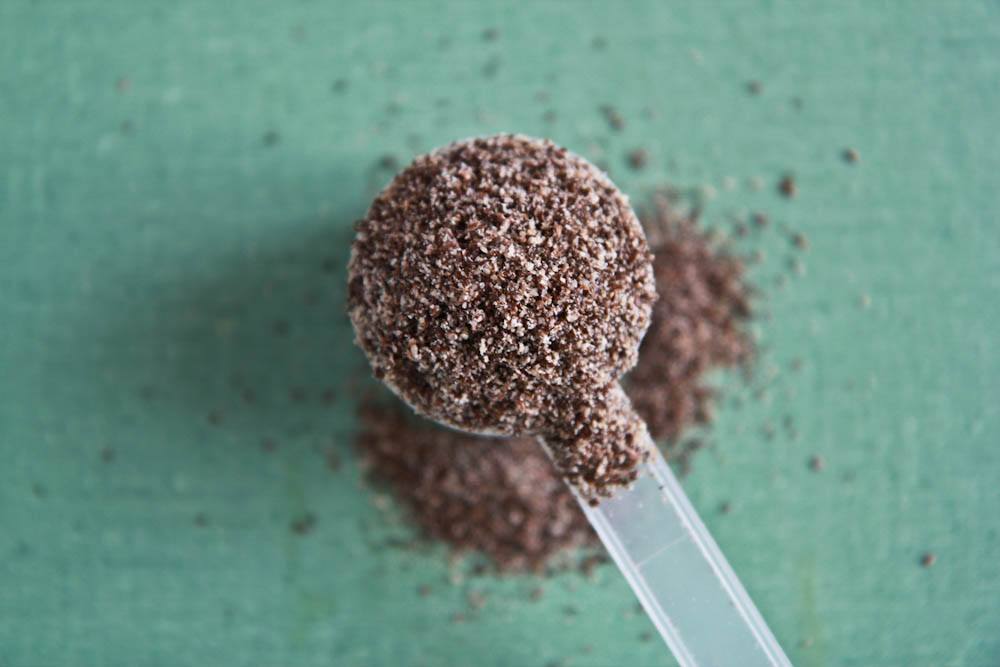But Mila's seeds have a really high price point (about three to five times more than other brands) that is justified by the claim that their chia seeds are more nutritious. We reviewed the research and spoke with leading nutritionists and researchers to get the facts. Here's what we found:
Claim: Mila's blend of chia seeds has more omega-3s, protein, and fiber than any other brand on the market.
Facts: If you go by the nutrition label, Mila's levels of important nutrients are generally about the same as other brands. For example, if you compare Mila to Nutiva (one of the biggest brands on the market), you see that Nutiva and Mila both list 3g of protein and 5g of dietary fiber per serving. Since Mila's serving size is one gram greater, Nutiva's levels are actually slightly higher on those points. When it comes to omega-3s, Mila lists 231mg per gram; Nutiva has 198mg per gram, so Mila wins by a slight margin.
But Lifemax claims that the label information on the other bags is inaccurate. Lifemax sent Mila Chia Seeds to a top-of-the-line research facility, The North Carolina Research Campus, to be tested for nutritional value. Dr. David Nieman, a respected researcher, compared Mila's nutrient levels to other "strains of chia from commercial growers," and found that Mila was exponentially superior on most counts—from omega-3s to fiber and important minerals. The problem? There's no way for you to know which of these strains other brands are using.
 Claim: Your body can convert the omega-3s from Mila better than from other chia seeds.
Claim: Your body can convert the omega-3s from Mila better than from other chia seeds.
Facts: "While chia seeds may be a good source of alpha-linolenic acid (ALA), humans poorly convert ALA to the very long highly unsaturated fatty acids that are cardioprotective," says Dr. Donald B. Jump, a researcher at the Linus Pauling Institute. That is, your body needs to make EPA and DHA out of ALA in order for it to be worth anything.

{{post.sponsorText}}
Dr. Nieman showed that in women eating Mila, the body was able to convert ALA to EPA at unusually high levels. Sweet! But, again, it's unclear whether this is a benefit of all chia seeds, or Mila Chia Seeds, since this part of the study only looked at Mila.
Claim: All other chia seeds are useless, because you don't absorb the nutrients unless the seed is "opened."
Facts: At the presentation I attended, the presenter told me that it was common knowledge that chia seeds need to be opened in order for the body to process their nutrients. Except, actually, it's not.
One of the reasons chia seeds have gotten so much attention as a superfood is for the exact opposite reason. Unlike flax seeds, which have a tough shell and need to be ground, researchers and nutritionists have found that chia seeds are just as powerful when ingested whole.
"Chia is free from the anti-nutritional factors that can inhibit the absorption of nutrients in other whole seeds or grains. The reason is that it has a very fine, soft shell," says Ashley Koff, RD, a renowned nutritionist and author of Mom Energy![]() . "It is also a perfect oval shape which naturally encapsulates the omega-3, keeping it free from any toxicity. Most research shows that the nutrients are bio-available in the whole seed, as indicated by blood lipid results."
. "It is also a perfect oval shape which naturally encapsulates the omega-3, keeping it free from any toxicity. Most research shows that the nutrients are bio-available in the whole seed, as indicated by blood lipid results."
Company co-founder Jim Wear told us the research on this, proving Lifemax's point, will be released any day now. We promise we'll be the first to share it with you. —Lisa Elaine Held
Loading More Posts...
